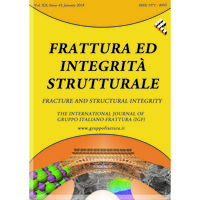
Ali Rahman
I am a researcher with expertise in road materials and pavement design. I always look for latest advancements in my research area and try to cross the frontiers ofknowledge.
Address: Chengdu, Sichuan, China
Address: Chengdu, Sichuan, China
less
Related Authors
Jongeun Baek
Sejong University
Hamad Ibrahim H Al-abdulwahab
King Fahd University of Petroleum and Minerals
Muhammad A. Dalhat
King Fahd University of Petroleum and Minerals
Timothy Kimemia
Jomo Kenyatta University of Agriculture and Technology
Sherif El-Badawy
Mansoura University
Ingeniería e Investigación
Universidad Nacional de Colombia (National University of Colombia)
Hugo A Rondón-Quintana
Universidad Distrital Francisco Jose de Caldas, Bogota, Colombia
InterestsView All (10)








Uploads
Papers by Ali Rahman
asphalt pavement sections with typical surface structures are built. The effects of axle configuration, axle
load, speed and testing temperature on strain response of asphalt pavement were analysed through in
situ dynamic loading. Experimental results indicate that the strain response at the bottom of the asphalt
surface layer increases with increasing axle load and temperature, but decreases with the rise of speed.
On the other hand, the temperature exerts different influence levels on pavement sections with different
structures. It is also concluded that the tandem axle load could lead to a greater strain response than that
of single axle load. Applying the analysis of variance, the effects of pavement surface temperature, axle
load, speed and their double interactions are studied as well. Finally, the paper proposes prediction models
of the strain response at the bottom of asphalt layer by means of multivariate regression analysis.
motivation for exploring alternatives to existing methods of constructing and rehabilitating roads. The
use of geosynthetics to stabilize and reinforce paved and unpaved roadways offers one such
alternative. Many studies were conducted to evaluate the improvements associated with geogrid
reinforcement of pavements. It is widely believed that geogrid reinforcement of roadways can extend
the pavement’s service life and/or reduce the pavement’s structural thickness. This paper examines
a method to compare traditional pavement structure designs, absent of geosynthetics, to pavement
structure designs incorporating geosynthetics. At first, a specific unpaved road structure design is
presented with recommended corresponding traditional road structure components. The road
structure is then re-examined incorporating newly developed, reengineered geogrid. Finally, related
costs with this particular design are outlined, analyzed and compared. In this case, cost savings
achieved by using geogrid are substantial.
road sides. These barriers will redirect deviated automobiles onto the right path and will also
prevent overturning and hitting dangerous obstacles. This will reduce fatality and injury. Regarding
the roads condition to obtain more safety in Iran, this paper has concentrated on the safety barriers
survey, and the behavioral based on their type, the road's condition and also related economical
evaluation. To obtain the above mentioned aims, in addition to investigating the pre-performed
study, surveys around the world and the current status of the safety barriers in the country, the
preferred option will be chosen and then introduced based on the performed technical and
economical comparing between two common barriers in Iran. Taking into consideration the
executive facilities, and current technical and economical conditions.
consumption as well as air pollution in Ahvaz has been investigated. The No. 1metro path in Ahvaz
with 23 kilometers length will connect the north eastern part of the city to its south western part by
passing through the central area and crossing Karun River. At the beginning, some points will be
mentioned regarding railway systems around the world and then the specification of Ahvaz No. 1
metro will be introduced. Finally, the amount of decreasing energy consumption and air pollution
after utilizing 4 urban metro lines will be investigated. The results have shown considerable effects
on decreasing these items.
asphalt pavement sections with typical surface structures are built. The effects of axle configuration, axle
load, speed and testing temperature on strain response of asphalt pavement were analysed through in
situ dynamic loading. Experimental results indicate that the strain response at the bottom of the asphalt
surface layer increases with increasing axle load and temperature, but decreases with the rise of speed.
On the other hand, the temperature exerts different influence levels on pavement sections with different
structures. It is also concluded that the tandem axle load could lead to a greater strain response than that
of single axle load. Applying the analysis of variance, the effects of pavement surface temperature, axle
load, speed and their double interactions are studied as well. Finally, the paper proposes prediction models
of the strain response at the bottom of asphalt layer by means of multivariate regression analysis.
motivation for exploring alternatives to existing methods of constructing and rehabilitating roads. The
use of geosynthetics to stabilize and reinforce paved and unpaved roadways offers one such
alternative. Many studies were conducted to evaluate the improvements associated with geogrid
reinforcement of pavements. It is widely believed that geogrid reinforcement of roadways can extend
the pavement’s service life and/or reduce the pavement’s structural thickness. This paper examines
a method to compare traditional pavement structure designs, absent of geosynthetics, to pavement
structure designs incorporating geosynthetics. At first, a specific unpaved road structure design is
presented with recommended corresponding traditional road structure components. The road
structure is then re-examined incorporating newly developed, reengineered geogrid. Finally, related
costs with this particular design are outlined, analyzed and compared. In this case, cost savings
achieved by using geogrid are substantial.
road sides. These barriers will redirect deviated automobiles onto the right path and will also
prevent overturning and hitting dangerous obstacles. This will reduce fatality and injury. Regarding
the roads condition to obtain more safety in Iran, this paper has concentrated on the safety barriers
survey, and the behavioral based on their type, the road's condition and also related economical
evaluation. To obtain the above mentioned aims, in addition to investigating the pre-performed
study, surveys around the world and the current status of the safety barriers in the country, the
preferred option will be chosen and then introduced based on the performed technical and
economical comparing between two common barriers in Iran. Taking into consideration the
executive facilities, and current technical and economical conditions.
consumption as well as air pollution in Ahvaz has been investigated. The No. 1metro path in Ahvaz
with 23 kilometers length will connect the north eastern part of the city to its south western part by
passing through the central area and crossing Karun River. At the beginning, some points will be
mentioned regarding railway systems around the world and then the specification of Ahvaz No. 1
metro will be introduced. Finally, the amount of decreasing energy consumption and air pollution
after utilizing 4 urban metro lines will be investigated. The results have shown considerable effects
on decreasing these items.